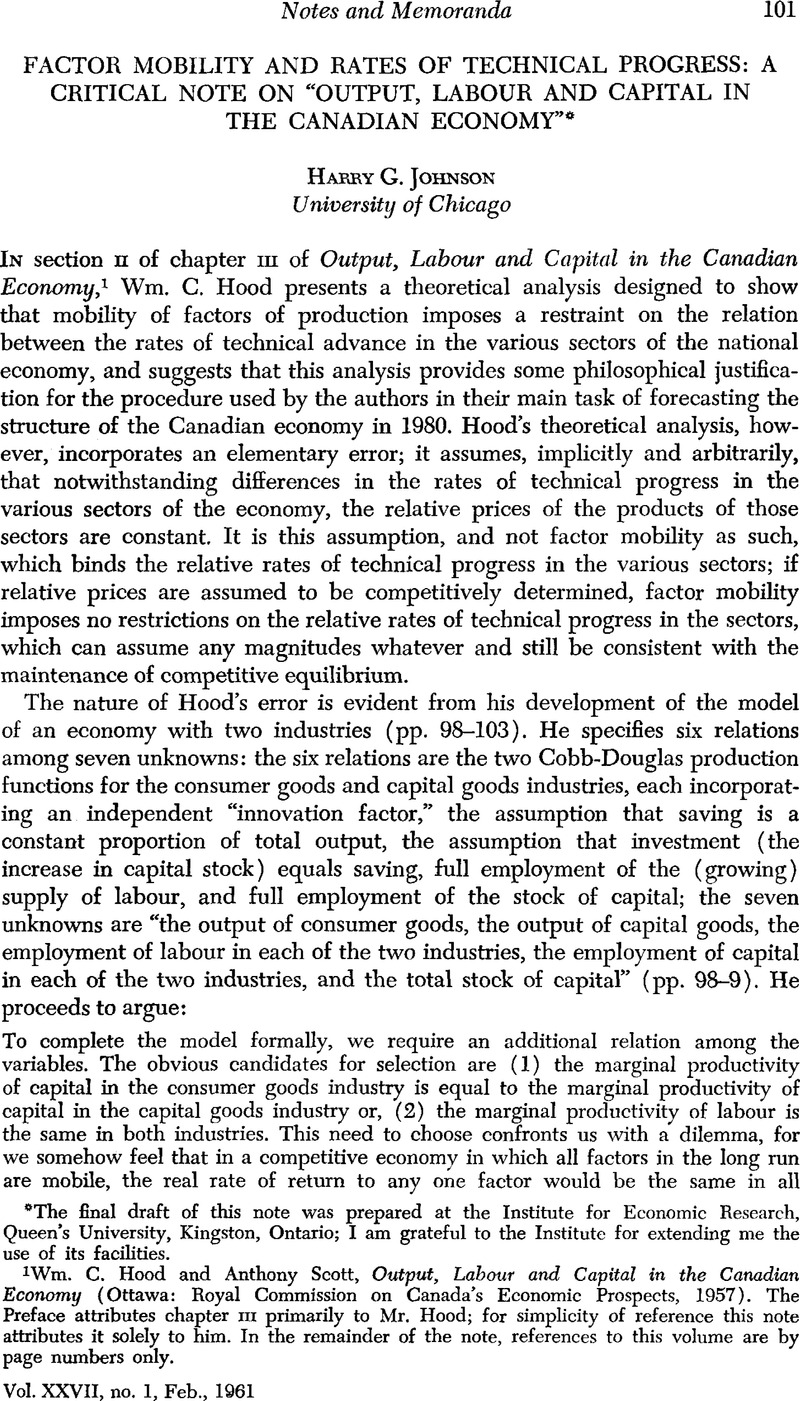No CrossRef data available.
Article contents
Factor Mobility and Rates of Technical Progress: A Critical Note on “Output, Labour and Capital in the Canadian Economy”*
Published online by Cambridge University Press: 07 November 2014
Abstract

- Type
- Notes and Memoranda
- Information
- Canadian Journal of Economics and Political Science/Revue canadienne de economiques et science politique , Volume 27 , Issue 1 , February 1961 , pp. 101 - 105
- Copyright
- Copyright © Canadian Political Science Association 1961
Footnotes
The final draft of this note was prepared at the Institute for Economic Research, Queen's University, Kingston, Ontario; I am grateful to the Institute for extending me the use of its facilities.
References
1 Hood, Wm. C. and Scott, Anthony, Output, Labour and Capital in the Canadian Economy (Ottawa: Royal Commission on Canada's Economic Prospects, 1957).Google Scholar The Preface attributes chapter in primarily to Mr. Hood; for simplicity of reference this note attributes it solely to him. In the remainder of the note, references to this volume are by page numbers only.
2 This equation system is designed to emphasize the assumption of factor mobility; other systems, essentially identical with this one, could be formulated.
3 Hood's reference to the rate of exchange may be misleading: the equilibrating factor in this model is the terms of trade between exports and imports, changes in which may take the form of either exchange rate or domestic price changes, depending on the monetary assumptions.
4 In my “Equilibrium Growth in an International Economy,” this Journal, XIX, no. 4, 11, 1953, 478–500 Google Scholar, esp. part II and 496–500, to which Hood refers, the change in the saving ratio is deduced from the effect of a change in the terms of trade on real income. The argument there depends on the assumption that the saving ratio is an increasing function of real income, an assumption which in the light of more recent work appears questionable.




